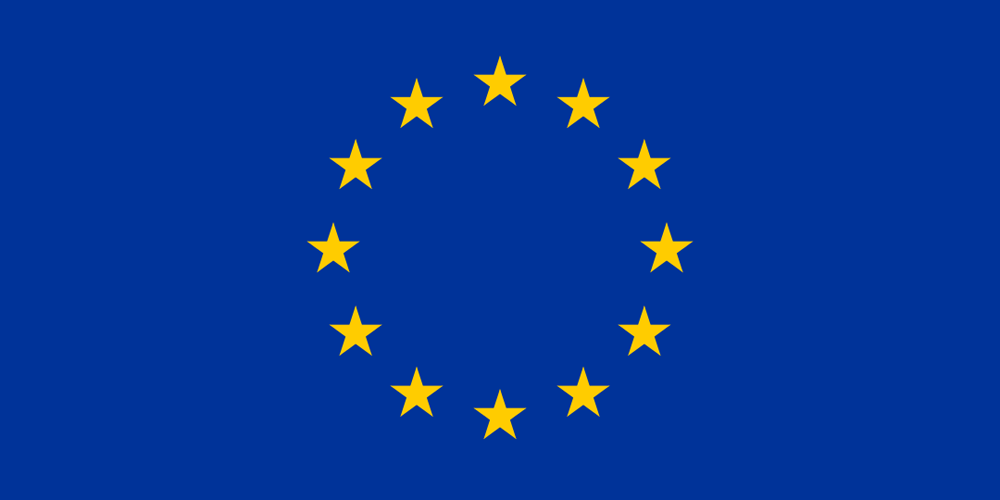Currency in Estonia: EUR Send & Spend FX Guide
Resources for Expats, Travelers, and Entrepreneurs Navigating Life and Trade in Estonia with the Euro.

What's in this Estonia currency guide?
What currency is used in Estonia?
The official currency of Estonia (country code: EE) is the Euro, with symbol € and currency code EUR.
What is a good Euro exchange rate?
The BestExchangeRates.com currency comparison table below helps you see the total cost of your currency transaction by showing the exchange rates offered by different providers. It also makes it easy to spot potential savings from market-leading FX services compared to bank rates.
To see a full list of rates, enter your transaction type, currencies and amount then click ‘GET RATES’:
Loading rates...
|
|
|
Good things to know about the Euro
As of June 16, 2025, the Euro (EUR) has experienced notable developments affecting travelers, expats, and business owners:
- Interest Rate Adjustments: The European Central Bank (ECB) has reduced its key interest rates multiple times since April 2025, with the deposit rate now at 2%. This easing cycle aims to stimulate economic growth amid global uncertainties. (ft.com)
- Inflation Trends: Eurozone inflation has moderated, with the latest data showing a decrease to 2.4% in November 2024, bringing it closer to the ECB's 2% target. (nbcdfw.com)
- Eurozone Expansion: Bulgaria is on track to adopt the euro on January 1, 2026, following successful convergence assessments. This expansion may influence currency dynamics and economic interactions within the euro area. (en.wikipedia.org)
These developments are crucial for individuals and businesses engaged in international transactions, as they can impact exchange rates, purchasing power, and overall economic conditions.
For more EUR information check out our selection of Euro news and guides.
Frequently Asked Questions
What currency should I use in Estonia?
The domestic currency in Estonia is the Euro.
What is the Euro currency code and symbol?
The three letter currency code for the Euro is EUR — symbol is €.
What does the Euro look like?
Here is an example Euro banknote:

Which countries use the Euro?
It is the domestic currency in Eurozone, Aaland Islands, Andorra, Austria, Belgium, Croatia, Cyprus, Estonia, Finland, France, French Guinea, French Southern Territories, Germany, Greece, Guadeloupe, Vatican City, Ireland, Italy, Latvia, Lithuania, Luxembourg, Malta, Martinique, Mayotte, Monaco, Montenegro, Netherlands, Portugal, Reunion, Saint Barthelemy, Saint Martin, Saint Pierre and Miquelon, San Marino, Slovakia, Slovenia and Spain.
Is the Euro a closed currency?
No, the Euro is freely available and convertible. See guide: What is a closed currency?
What are equivalent amounts of USD and EUR?
Here are some popular conversion amounts for USD to EUR (US dollar to Euro)*.
*Converted at the current USDEUR interbank exchange rate. Calculate actual payout amounts for Send Money and Travel Money exchange rates.

Travel money for Estonia
Using Wise for Euro travel money is a smart choice for savvy travelers. With its competitive exchange rates and low fees, Wise allows you to convert and manage multiple currencies effortlessly.
Be careful when using your own bank's Debit/Credit Card, as your bank may also charge an extra 3% as an “Overseas Transaction Charge” plus “Overseas ATM” fees for withdrawing cash on top of the standard Visa/Mastercard 2.5% from market mid-rate.
For card purchases, if you are offered a choice of currencies always select to Pay in Euro otherwise you will typically get much worst dynamic currency conversion (DCC) exchange rates.
If you really want Euro cash before departure, you can save money by ordering online. You generally get better rates and can pick up the EUR cash locally or even on travel day at the airport.
Estonia: Travel Guide
Traveling to Estonia requires careful financial planning to ensure a smooth and cost-effective experience. Here's a comprehensive guide to help you navigate currency considerations and manage your money effectively during your visit.

Estonia is a country located in Northern Europe, bordered by the Baltic Sea to the west, Latvia to the south, and Russia to the east. It is known for its unique culture, advanced technology, and natural beauty. The country's official language is Estonian and its capital and largest city is Tallinn. The official currency is the Euro. Estonia has a parliamentary republic form of government.
The country is known for its unique culture, which is influenced by its history as a former Soviet republic and its location at the crossroads of Northern Europe. Some popular tourist destinations include:
- Tallinn: The capital city, known for its well-preserved medieval Old Town, which is a UNESCO World Heritage site.
- Saaremaa: The largest of Estonia's islands, known for its natural beauty, including beaches, cliffs, and forests.
- Tartu: Estonia's second-largest city, known for its cultural heritage, including its many museums, art galleries, and the University of Tartu.
- Lahemaa National Park: A beautiful park located on the northern coast of Estonia, known for its natural beauty and diverse wildlife.
- Parnu: A popular seaside resort town, known for its long white sand beaches and lively summer festivals.
- Hiiumaa island: Known for its serene and unspoiled nature, with small towns, lighthouses, and some of the best beaches in Estonia

Everyday Costs in in Estonia
How much does it really cost to live, work, or travel in Estonia? Here's what to expect for daily expenses and expat living.
Currency Guide: Estonia (ISO Code: EE)
Traveling to Estonia for a week can be delightful and fairly affordable, especially with the right budgeting. For a mid-range stay, a traveler should ideally plan on bringing around €700-€1,000 (approximately $760-$1,080). Here’s a glimpse of typical daily expenses in euros (€):
- 🍽️ Meal at a local restaurant: €12–€20
- ☕ Coffee: €2–€3
- 🚍 Public transport fare: €1.50
- 📶 Prepaid SIM card: €15
- 🏨 Budget hotel or Airbnb: €50–€80 per night.
In overall terms, Estonia can be considered an average destination in terms of cost. It’s friendlier on the wallet compared to the United States and somewhat pricier than the UK. For instance, dining out and local experiences may cost 20-30% less in Estonia than in major U.S. cities, while staying in the UK, especially in London, can be significantly higher both for meals and accommodation.
Expat Living Costs & Banking in Estonia
For expats, the typical monthly living costs in Estonia can range from €800 to €1,200, depending on lifestyle and location. Major expenses include rent for a one-bedroom apartment in the city center (€500–€800) and utilities (€100–€150). When it comes to banking, most international cards are widely accepted, and it’s typical to use a local bank’s ATM to withdraw cash when needed.
For money transfers and exchanges, using online transfer services like Wise or OFX is often more cost-effective compared to exchanging cash locally. They typically offer better exchange rates and lower fees. However, for immediate daily expenses, using a debit or credit card is convenient and secure. As always, ensure your card provider has favorable international transaction policies to minimize fees.
USD/EUR Market Data
The below interactive chart displays the USD/EUR change and UP📈 DOWN📉 trends over the past 1 Year.

Recent Euro Market News
Recent Developments Affecting the EUR Price
1. Eurozone Inflation Rates: Recent data shows inflation in the Eurozone remains elevated, affecting ECB monetary policy decisions. (Source: Reuters, ECB)
2. ECB Interest Rate Outlook: Comments from ECB officials indicate a potential pause in interest rate hikes, causing speculation about the EUR's stability.
3. Economic Growth Concerns: GDP growth figures for the Eurozone show signs of slowing, impacting confidence in the Euro.
4. Geopolitical Tensions: Ongoing geopolitical tensions, particularly regarding trade relations with the US and UK, influencing market sentiment around the Euro.
5. Energy Prices: Fluctuations in energy prices due to global supply concerns are affecting Eurozone economies and, consequently, the EUR. (Source:
6.Eurozone Expansion: As of June 2025, Bulgaria is set to become the 21st member state of the eurozone, with the euro adoption scheduled for January 1, 2026.
For more EUR information read our News and guides to the Euro.
Send Money to Estonia - Best Rates
To get a good (and fair) exchange rate when sending money to Estonia you need to find and compare exchange rates for International Money Transfers (IMTs).
The available FX rates for sending money abroad can be very different to the mid-market (wholesale) rate which you see reported online and in the News.
You should especially compare your own bank's exchange rates to those available from Money Transfer specialists to see how much you can save - we make that calculation easy in the below table.
Get a better deal for foreign transfers to Estonia
When sending money to Estonia it’s important to compare your bank’s rates & fees with those we have negotiated with our partner money transfer providers. To get a better deal you should follow these 4 simple steps :
- Open an account with a BER reviewed FX provider (id docs may be required)
- You specify the local or Euro amount you want to transfer
- Make a local currency domestic transfer for the requested amount to the provider's bank account in your country
- Once your funds are received by the provider the converted EUR amount will be transfered to the recipient account you specify in Estonia.
Use the above calculator to compare the exchange rates of FX specialist providers rates versus your bank's standard rates you can hopefully save around 5% and maybe more - end result is more Euro deposited into the recipient bank account and less margins and fees kept by the banks!

Managing money while living and working in Estonia
Managing your money effectively while living and working abroad can be challenging, but there are several steps you can take to ensure that your finances are in order.
Understand Euro currency exchange rates: Exchange rates can have a big impact on your finances, so it is important to keep an eye on the EUR exchange rate and consider using a money transfer specialist or a credit card that does not charge foreign transaction fees to get the best exchange rate.
Use a local Euro bank account: A local EUR bank account can make it easier for you to manage your finances and pay bills while you are in Estonia. It may also be more convenient to use a local EUR bank account to make purchases and withdraw cash.
Research local laws and regulations: It is important to understand the local laws and regulations that apply to financial transactions in Estonia. This can help you avoid legal issues and ensure that you are complying with local requirements.
Consider the tax implications: It is important to understand the tax implications of living or doing business in Estonia. This can help you plan your finances and ensure that you are paying the correct amount of tax.
Seek financial advice: If you are unsure of how to manage your finances in Estonia, it is a good idea to seek the advice of a financial professional who is familiar with the local financial system. This can help you make informed decisions and avoid financial pitfalls.
We have put together some key points to help managing your money effectively, you can reduce financial stress and enjoy your experience living or doing business in Estonia.

Business in Estonia
Estonia is also known for its forward-thinking approach to technology and is often referred as "e-Estonia", it is one of the most technologically advanced countries in the world.
Estonia has a developed market economy with a per capita income similar to that of other European economies such as Finland and Denmark. Services, particularly IT and telecommunications, are a major driver of the economy, with a growing number of start-ups active.